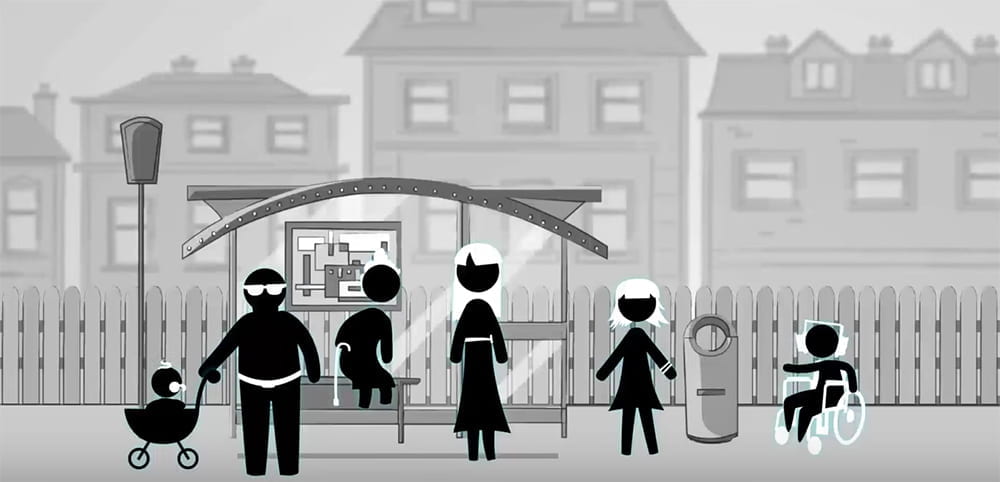Creating Inclusive Spaces for the Disabled Community Through Universal Design
By RaeJean Boyd
March 15, 2017

Screen capture from “Meet the Normals – Adventures in Universal Design.” Via the National Disability Authority.
The disabled community has been ignored by the environmental movement for too long. One way to correct this slight to ableism is to advocate and practice universal design.
Universal design is “the design and composition of an environment so that it can be accessed, understood, and used to the greatest extent possible by all people regardless of their age, size, ability or disability.” (Buxton)
Access to resources should not be predicated on ability. In the United States, there are 48.9 million people who have a disability, either physical or mental. Of that 48.9 million, 34.2 million are classified as having a functional disability (The National Service Inclusion Project ).
Implementing universal design is an immediate way to create inclusive spaces and address bias in environmental design, both physical and natural. Creating “barrier-free spaces” can be as simple as removing or redesigning interior doors in buildings so that people in wheelchairs can move throughout the space ( United Nations).
Yet, the answer is not just to increase accommodations. As environmentalists, we should address environmental barriers by changing our thought process when planning. When implemented correctly, universal design does not require “special adaptations” (University of Washington). For example, the solution to someone entering a building in a wheelchair should not be to add a separate ramp. Instead, stairs should be replaced the with a ramp so that everyone can enter the same way, regardless of their physical, mental, or emotional disabilities.
With many people suffering from nature deficit disorder it is important that we do not further isolate people from their environment (Gamer). By making efforts to be inclusive to all marginalized groups including people with disabilities we can prevent causing alienation in environmental spaces.
For example, field trips in New York City schools often require students to take the subway. Yet this can be an issue for children in wheelchairs because some train stations only have steps and escalators. If planners had implemented accessible designs, subway systems would not be on multiple floors or all steps and escalators would be replaced with ramps or elevators. Additionally, if the trip was to the Brooklyn Botanical Gardens or a similar location students with emotional issues such as anxiety or depression that require emotional support animals may not be able to attend. The Brooklyn Botanical Gardens specifies that only trained service animals are welcome. Through universal design, these spaces would welcome all animals used for health reasons.
Often, when nature organizations take people out for hikes resources for people with physical limitations such as wheelchairs or blindness are missing (Great Outdoors). In this scenario, inclusion would require “removal of debris, reshaping the trail bed, [and] erosion control,” all of which would make the trail better for everyone (Macdonald).
Creating barrier-free spaces using universal design is key to addressing ableism and creating cohesion in the field. It is our moral obligation as environmentalists to address the disparities within our community to include people of all races, nationalities, socio-economic backgrounds, abilities, and disabilities.

